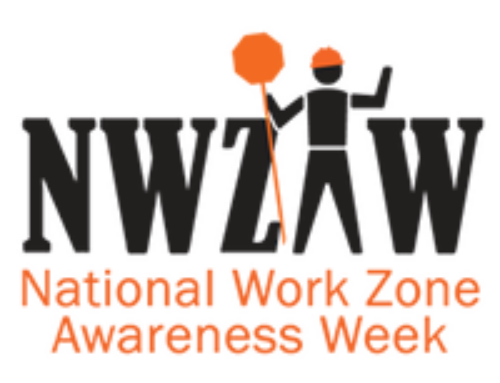AUTHOR: Sal Valadez, LiUNA EMLDC & SLCCC Safety Committee Member
According to the Missouri Hospital Association’s 2019 report, The Economic Cost of the Opioid Crisis in the U.S. A State-by-State Comparison, the economic cost of the 47,576 opioid overdose deaths in 2017 in the U.S. were estimated at $634 billion. Costs associated with non-fatal opioid use disorders totaled an additional $50.5 billion for a total cost of $684.5 billion. In Missouri, these costs amounted to $14.02 billion dollars in 2017. Nationally, the cost of the opioids crisis to the construction industry is estimated at $781 million dollars.
In Missouri, for a construction company with 110 employees, the estimated annual cost related to opioids is $40,839; for a company with 200 employees the estimated annual cost is $81,678 (National Safety Council – A Substance Use Cost Calculator for Employers, see link below).
The Missouri Department of Health and Senior Service most recent report indicates that the opioids crisis in our State is accelerating, not decreasing, based on statistics from 2014 to 2018.
According to national statistics, construction leads all business sectors in both opioids overdoses/substance abuse and suicide rates. Many experts believe that these issues are related to the mental health and wellness of our workers.
In construction and manufacturing, two major industries that are already dealing with skilled labor crunches, are being hit hard by the opioid crisis. For example, recent reports show that spending on opioid prescriptions is consistently 5 to 10 percent higher in construction than any other industry.
In a recent AM Trust report, The Industries Most Affected by the Opioid Epidemic, “The construction industry has experienced the brunt of the opioid epidemic, most likely due to the physical nature of the job. A study from the Midwest Economic Policy Institute discovered that the injury rate for construction workers is 77 percent higher than the national average for other occupations. Of the Midwestern States reviewed in the study, as many as 60 to 80 percent of the workers’ compensation claims in the construction industry involved opioid prescriptions for injuries incurred on the job.”
This past September (2019), the National Safety Council released an opioids toolkit for employers. “Two-thirds of American adults with opioid use disorders are in the workforce,” said Lorraine M. Martin, president and CEO of the National Safety Council. “Everyone has a role to play in ending opioid overdose, including employers, who are often on the front lines. Organizations big and small will find life-saving information in this new toolkit – information that not only will help employers protect profits, but most important, their people.”
The opioids crisis is taking a large toll on the construction industry. This crisis is exacerbated by the parallel crisis of the increase of suicides in our workforce. According to the American Society of Safety Professionals 11 May 2019 report, “A suicide occurs every 12 minutes in the U.S. While these incidents touch every industry, one industry in particular has felt the impact of suicide in recent years – construction and extraction. A CDC study found that in 2012 and 2015, suicide rates were highest among males in the construction and extraction occupational group.”
These health issues are both challenges and opportunities. Coupled with having an older workforce on the verge of retirement, the need to prepare a workforce ready to take their place, and demographic changes, it will require a continuation of the efforts already begun in St Louis. Everyone in our industry must take responsibility to address these issues. Everyone must be involved in the process, the consumers (buyers) of construction, the construction trades, construction company owners, the AGC, the Construction Forum of St Louis, the SLCCC, and others. The conversation should include diverse perspectives on these issues from every sector of our industry. The health, welfare, and safety of our workers depend on our industry’s ability to collaborate and think holistically in developing meaningful solutions to address these workforce crises.
Please continue to follow the SLCCC website https://slccc.net/ for 2020 events and workshops (from us and from our partners) on these topics.
Sources/Resources:
- Missouri Hospital Association, The Economic Cost of the Opioid Crisis in the U.S. A State-by-State Comparison (2019 Report), https://www.mhanet.com/mhaimages/Policy_Briefs/PolicyBrief_Economic_Cost_ofthe_Opioid_Crisis_inthe_U.S._0419.pdf
- National Safety Council – A Substance Use Cost Calculator for Employers
https://www.nsc.org/forms/substance-use-employer-calculator
- AM Trust Report, The Industries Most Affected by the Opioid Epidemic,
https://amtrustfinancial.com/blog/small-business/industries-affected-opioid-epidemic
- Midwest Policy Institute, Addressing the Opioid Epidemic Among Midwest Construction Workers Report (Feb 2018) https://midwestepi.files.wordpress.com/2018/02/opioids-and-construction-final2.pdf
- Forbes Magazine, December 2017, America’s Workforce Is Paying A Huge Price For The Opioid Epidemic, Article featuring the Construction Forum St Louis December 2017 forum “Opioids: A Building Epidemic.”
- https://www.forbes.com/sites/nicholaswyman/2017/12/12/americas-workforce-is-paying-a-huge-price-for-the-opioid-epidemic/#d1faa9f71bd3
- St Louis CNR Article (May/June 2018, p. 10)Published on Jul 15, 2018, Hammering out the Opioids Crisis, https://issuu.com/scotttripp3/docs/cnr_mj18_print
- NSC Releases New Employer Opioid Toolkit, Calls on Employers to Take Major Action to Address Opioid Overdose, September 18, 2019, https://www.nsc.org/in-the-newsroom/-nsc-releases-new-employer-opioid-toolkit-calls-on-employers-to-take-major-action-to-address-opioid-overdose
- AM Trust Financial, The Industries Most Affected by the Opioid Epidemic
https://amtrustfinancial.com/blog/small-business/industries-affected-opioid-epidemic
- American Council of Safety Professionals, Suicide in the Construction Industry: Breaking the Stigma and Silence, Mar 11, 2019
- Center for Construction Research and Training (CPWR) Opioid Resources https://www.cpwr.com/research/opioid-resources
- Centers for Disease Control, https://search.cdc.gov/search/?query=opioids
- The Missouri Department of Health and Senior Services, https://health.mo.gov/data/opioids/death-toll.php, Our Communities – State and County Opioids Fact Sheets https://health.mo.gov/data/opioids/factsheets.php






